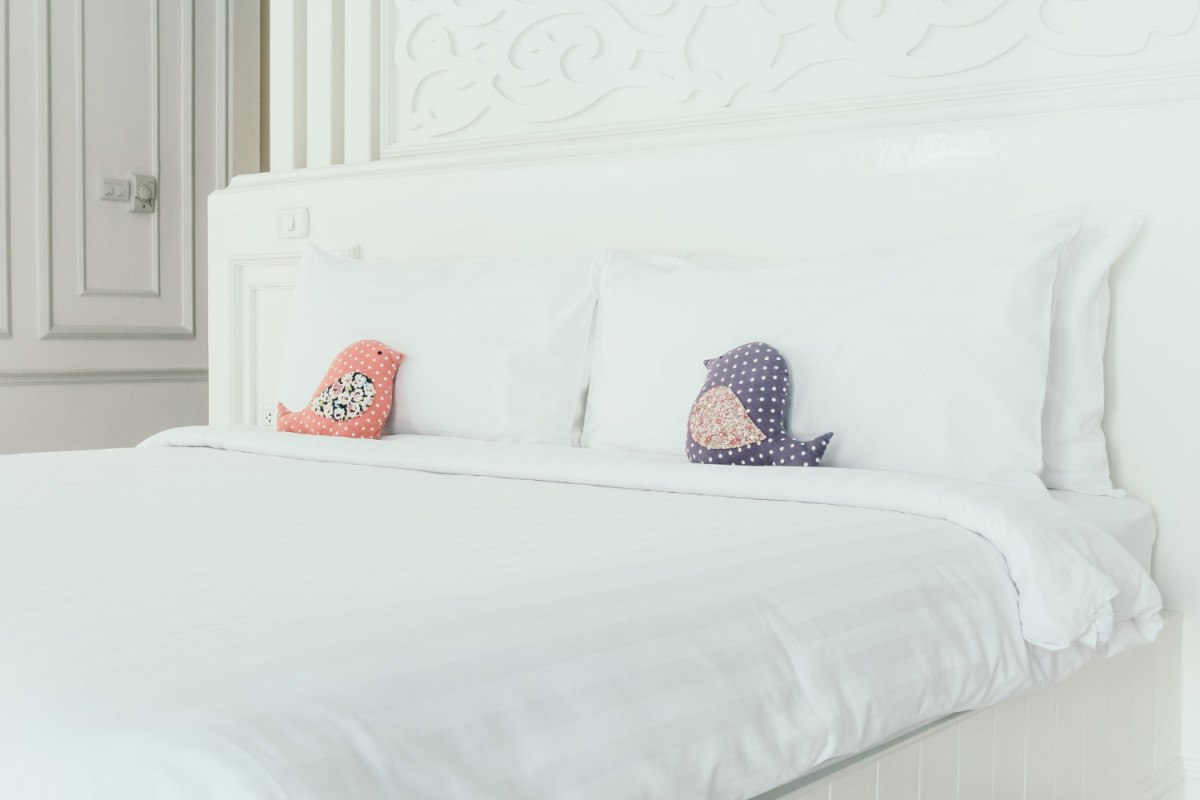Red Hanger Cleaners Promotes Healthier Sleep with Allergy-Safe Comforter Care
SALT LAKE CITY, UT — Red Hanger Cleaners, Utah’s leading professional laundry and dry-cleaning service, has released comprehensive comforter cleaning recommendations designed to help families reduce allergens and asthma triggers at home. With allergy and asthma conditions affecting millions of households, the company emphasizes the importance of proper bedding care for cleaner air and healthier sleep.
Comforter Cleaning Tips for Families with Allergies or Asthma
When a family member suffers from allergies or asthma, proper comforter care becomes critical—especially during high-allergen seasons. Spring pollen, fall dust, and winter’s enclosed indoor environments can all worsen respiratory symptoms. Even during regular days, allergens quietly build up in layers of bedding fabric, often going unnoticed until discomfort begins. What appears clean may actually harbor irritants, making diligent care an investment in better health and restful nights.
Wash Comforters Every 1–2 Weeks During Allergy Seasons
Seasonal changes bring unique challenges for allergy sufferers. Pollen in spring, humidity in summer, and dust in autumn can settle deep within bedding materials. Red Hanger Cleaners recommends washing comforters every one to two weeks during these high-risk periods to prevent allergen buildup and maintain a cleaner sleep environment.
Washing Tips During Allergy Seasons
Schedule washes: Mark wash days on the calendar to maintain consistency.
Pair with sheet changes: Align comforter washes with weekly sheet changes for an easy reminder.
Keep a backup comforter: Rotate between two to ensure one is always ready for use.
Consistent laundering throughout allergy seasons remains one of the simplest, most effective ways to reduce flare-ups and support easier breathing at night.
Use Hot Water (130°F / 54°C or Higher) When Fabric Care Allows
Hot water is one of the most effective tools in eliminating allergens. At temperatures of 130°F or higher, dust mites and bacteria are destroyed, and irritants are thoroughly removed. While cooler cycles refresh fabrics, they may not remove microscopic triggers.
Hot Water Wash Guide
Check the care label first: Ensure fabric can tolerate heat without shrinking or clumping.
Run an extra rinse cycle: Hot water loosens debris, and an additional rinse removes residue.
Dry with heat immediately after: A hot dryer cycle ensures allergens are fully eradicated.
When fabrics permit, hot water washing remains one of the most reliable defenses against hidden allergy triggers.
Choose Fragrance-Free, Hypoallergenic Detergents
Detergent selection plays a major role in comforter care. Many conventional detergents contain perfumes, dyes, and enzymes that can aggravate sensitive skin or airways. Red Hanger Cleaners advises using fragrance-free, hypoallergenic formulas to ensure comforters are truly clean and non-irritating.
Choosing the Right Detergent
Opt for “free and clear” products: These exclude artificial scents that linger.
Select dermatologist-tested brands: Such formulas are gentler on skin.
Use liquid detergent: Liquids dissolve more completely, leaving less residue.
By switching to mild, hypoallergenic detergents, households can reduce both allergens and skin irritants effectively.
Always Rinse Twice to Remove Detergent Residue
Even gentle detergents can leave behind residue in thick bedding. Soap particles attract dust and pollen, potentially triggering irritation. Red Hanger Cleaners recommends a second rinse cycle to ensure all detergent is removed.
Effective Double Rinsing
Use the washer’s “extra rinse” setting: Most modern machines include this feature.
Check for clarity: If suds remain, repeat until the water runs clean.
Rinse with warm water: Warmth helps release any detergent clinging to fibers.
A double rinse takes only minutes but yields significantly cleaner, allergen-free bedding.
Thoroughly Dry Comforters – Preferably in Direct Sunlight or a Hot Dryer
Even when a comforter feels dry, internal moisture can remain—creating ideal conditions for mold, mildew, and bacteria. To ensure full drying, Red Hanger Cleaners advises using direct sunlight or a hot dryer cycle.
Proper Drying Tips
Use a hot dryer cycle: Heat reaches deep layers, destroying allergens.
Air dry outdoors: Sunlight’s UV rays naturally disinfect fabrics.
Add dryer balls: Wool or tennis balls improve airflow and prevent clumping.
A fully dried comforter is not only more comfortable but also safer for those with respiratory sensitivities.
Use a Comforter Cover or Allergy-Proof Encasement
Protective encasements act as barriers against dust mites, pollen, and pet dander. These covers simplify cleaning and extend the lifespan of comforters.
Cover Care Guidelines
Choose tightly woven fabric: Prevents allergen particles from penetrating.
Wash weekly with sheets: Keeps buildup to a minimum.
Opt for zippered designs: Fully seals comforters against contaminants.
With protective encasements, families can maintain a cleaner, safer sleep environment year-round.
Avoid Fabric Softeners and Dryer Sheets
While fabric softeners may seem luxurious, they can introduce unwanted chemicals and residues that trigger allergies. Red Hanger Cleaners advises avoiding softeners and dryer sheets altogether.
Healthier Alternatives
Use wool dryer balls: Naturally soften fabric and improve drying.
Add vinegar to the rinse cycle: Freshens fabric and reduces static without chemicals.
Choose fragrance-free options: Non-irritating alternatives are widely available.
By skipping fabric softeners, families gain softness and freshness—without exposure to harmful residues.
Shake and Fluff Comforters Daily
Simple daily care can greatly reduce allergens. Shaking and fluffing comforters each morning helps remove dust, prevent clumping, and improve airflow.
Daily Fluffing Tips
Do it in the morning: Clears overnight dust and allergens.
Take it outdoors: A quick shake outside releases trapped particles.
Smooth seams and corners: Maintains fill distribution and shape.
This quick daily step keeps bedding breathable and prolongs comforter life.
Consider Professional Deep Cleaning for Bulky Comforters
Some comforters, such as down-filled or oversized pieces, are difficult to clean thoroughly at home. Red Hanger Cleaners recommends professional deep cleaning at least once or twice a year for optimal hygiene.
Professional Cleaning Tips
Schedule annually or semi-annually: Prevents deep allergen buildup.
Select allergy-care services: Many providers offer hypoallergenic options.
Look for pickup and delivery: Simplifies maintenance for busy families.
Professional cleaning revitalizes comforters, removing allergens that home washers can’t reach.
Protecting Families from Allergens – Red Hanger Cleaners Delivers Freshness
For healthier, more restful sleep, Red Hanger Cleaners provides specialized comforter cleaning services for all materials and sizes, including duvets and bedspreads. The company’s commercial-grade washers and professional-grade detergents remove embedded allergens, body oils, and odors that standard machines miss.
In addition to comforters, Red Hanger Cleaners also cleans blankets, pillows, cotton, silk, and satin bedsheets, afghans, and more—offering comprehensive bedding care solutions for families across Utah.
Easy Steps to Cleaner Bedding
Create Your Account
Leave Your Bedding to the Experts
Sleep Better with Fresh, Allergen-Free Comfort
As Utah’s largest dry-cleaning and professional laundry provider, with locations across Salt Lake, Davis, and Weber counties, Red Hanger Cleaners continues to uphold its mission of cleaner, healthier homes—one comforter at a time.
Media Contact:
Red Hanger Cleaners – Public Relations Department
www.redhanger.com
[email protected]




